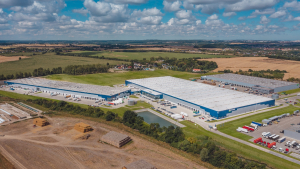
The CEE investment market continues to perform well in 2018 but investors are becoming increasingly cautious, driven by rising interest rates and the changing attractiveness of certain asset classes. Mike Atwell, Head of Capital Markets Czech Republic and Lead Director CEE at JLL talked to Property Forum about investor sentiment, financing and transparency.
Mike Atwell will join the investment panel at the upcoming CEE Property Forum 2018 in Vienna on 20 September.
What are your expectations for 2018 on CEE investment markets?
Certain key factors stand out in 2018’s CEE investment market. Firstly, it has to be the growth in investment volumes in Poland’s retail sector. Volumes have already reached €2.7 billion and are likely to exceed €3 billion, the highest level in history. Secondly, I would point to the growth of domestic investors’ prominence across some countries – notably the Czech Republic and Hungary where H1 2018 volumes for domestic capital has been recorded at 67% and 43%, respectively. Thirdly, I have to comment on the overall mood and sentiment in the market. We have been asking ourselves the question of how long these markets can keep performing at such positive numbers? I feel that there really are now signs of investor sentiment being more cautious in asset selection but as with any slowdown in a real estate market, the prime product continues to demand the highest and strongest pricing, as we have seen in both the Warsaw and Prague markets. I sense there has been a slowdown in investor appetite for retail unless it is a top-performing number one asset in a large city or with a strong catchment and yet with such strong office occupational markets across the region I see the office sector continuing its prominence with the highest volumes being recorded. Industrial/logistics still continues to see very high demand from investors who are frustrated by the lack of product.

Mike Atwell
Head of Capital Markets Czech Republic and Lead Director CEE
JLL
Do you expect the current sentiment to continue into 2019?
I am confident that the strength of the CEE markets will continue and will see strong allocations into real estate globally and across European markets in particular. The US has started to show some decline in activity and Europe tends to follow this trend albeit somewhat belatedly. I see the strong demand for core prime product across the main capital cities continuing and yield levels are expected to be in line with 2018 levels unless there is some major macroeconomic or political shock which alters that. The caution I referred to above will still apply and it is the core-plus and value-add sectors where we expect to see some cooling off.
Have you seen any major shifts in the popularity of different asset classes?
The office sector remains the most dominant and popular class backed up by the strong occupational markets across the regions, but this is predominantly focused on the capital cities. I feel that the regional cities may start to see a softening of their liquidity which is currently the case in Poland. Retail in secondary cities and non-prime assets have definitely suffered from a decline in appeal from international investors. The Europe-wide impact of e-commerce, competing stock in many cities has created a nervousness that has led the usual retail investors to be far more cautious than usual. The biggest growth in popularity has been witnessed in the industrial sector but again there is frustration from investors as a substantial amount of development pipeline is controlled by the major developers of Prologis, P3 and, particularly in the Czech Republic, by CTP who normally pass development projects into their own fund vehicles. The growth of the residential or living sector has probably been the most significant change – with the continuing allocations flowing into real estate, investors are forced to look outside of the core sectors of offices, retail and industrial/logistics in order to satisfy their investment requirements. The introduction of student housing schemes, for example, has recently been seen in CEE and is expected to grow. The “living sector” is certainly here to stay and will continue to grow in popularity and market share.
How have globally rising interest rates impacted financing conditions in the region?
With interest rates rising there will obviously be a knock-on effect on financing conditions – they are directly related. Interest rates are expected to remain relatively low for the next 12-18 months so real estate financing is still attractive and a yield gap clearly exists between real estate returns and finance in CEE. Generally, the banks and lending institutions are still enthusiastic to provide financing but as interest rates rise so will their costs of debt which get passed through to the end investors. The question to ask is when investors will start turning away from real estate as an asset class which still offers a favourable return in a risk-secure environment – in the core sector at least.
Would you say that transparency has improved on CEE markets in recent years?
In all honesty, I feel that the CEE markets have enjoyed a long period of transparency. The rate at which transparency has improved across the region is impressive and to get to where they are in such a relatively short period of time is phenomenal. Since JLL´s last study, Romania, Serbia and Slovakia have all made significant improvements to their respective transparency levels catching up with Poland and the Czech Republic. The pace of change for smaller markets, such as Serbia and Slovakia, is much faster due to where they are in the transparency contest. More mature markets in the region, such as Poland and the Czech Republic, may have naturally slowed down having already reached a pretty high level of transparency.



